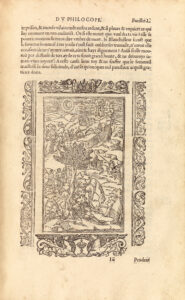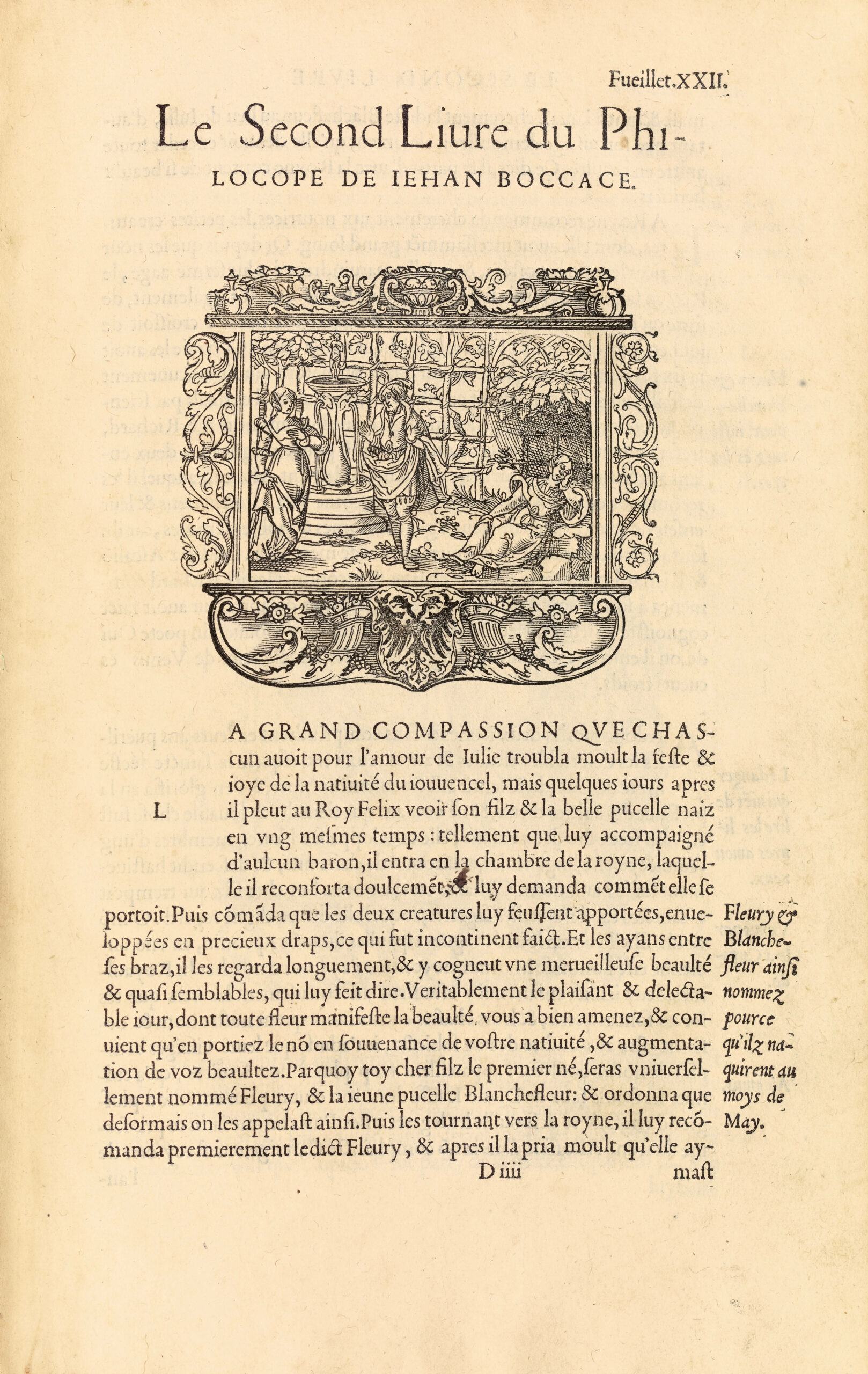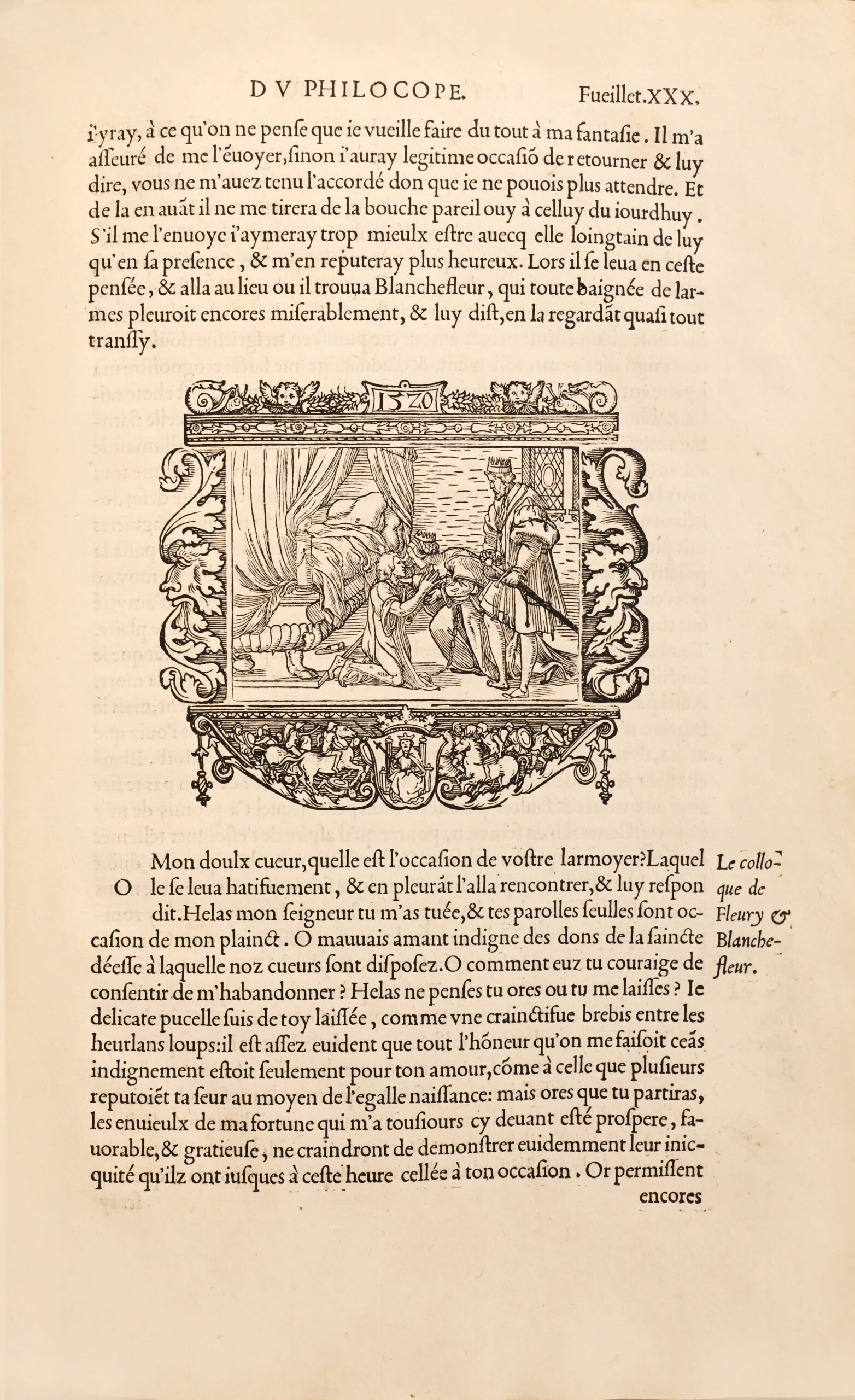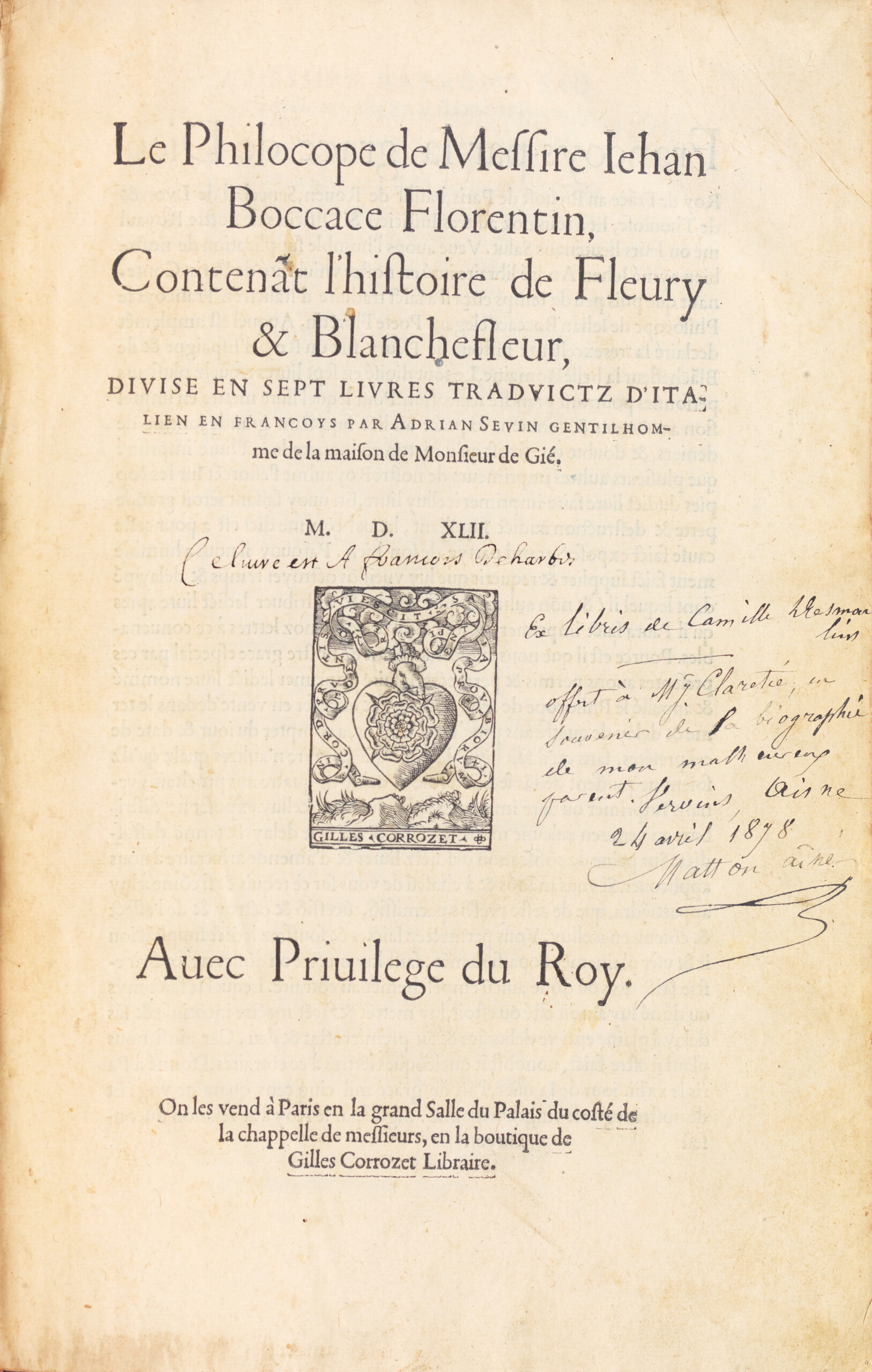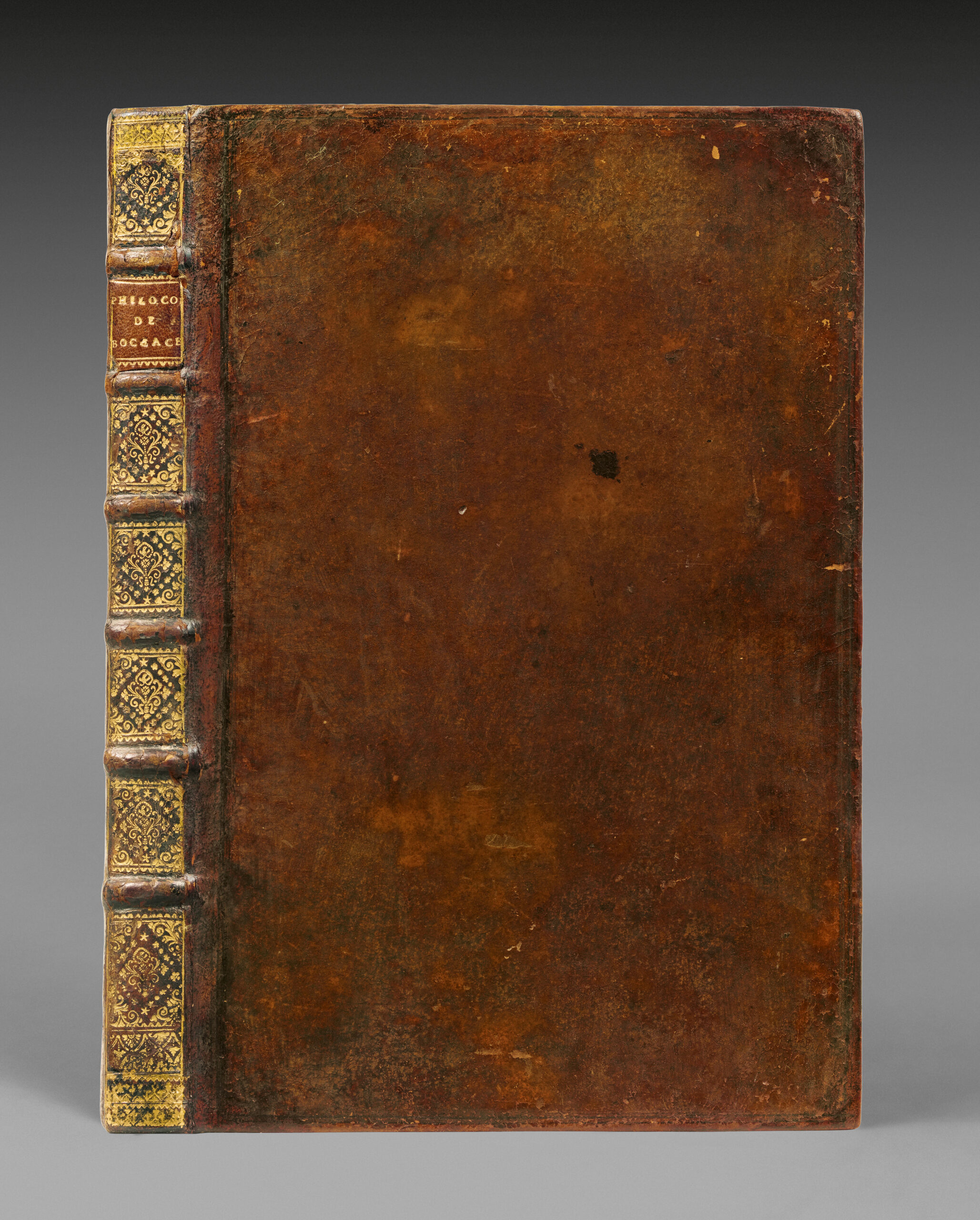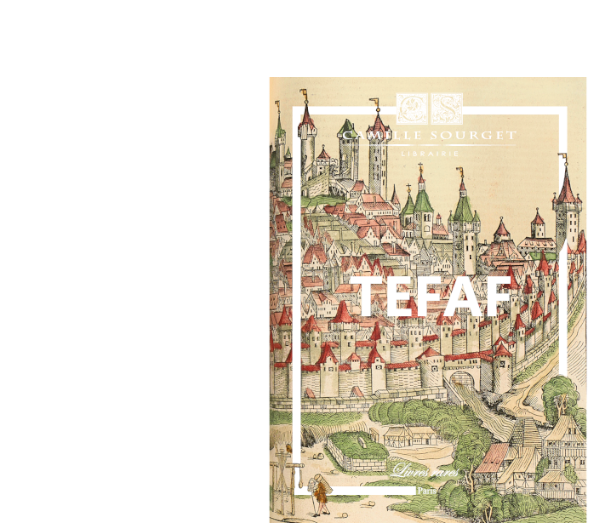Paris, Gilles Corrozet, February 24, 1542.
Folio of vi ll. and 174 ll. Brown calf, covers framed with blind-stamped fillets, spine decorated, marbled edges. Binding of the 17th century.
310 x 200 mm.
Original edition of the story Romeo and Juliet in French and original edition of the Philocope containing the Story of Fleury and Blanchefleur translated from Boccaccio by Adrian Sevin in 1542. La Croix du Maine, I, p. 8 et 52; A. Cohn. 1. S.'s adaptation of the legend of Romeo and Juliet7, Shakespêre, Jarbuch, XXIV, 1889, p. 122 sqq ; H. Hauvette, 1A French version of the legend of Romeo and Juliet7, RLC I, 1921. P. 329spp ; M. Simonin, 1The Disgrace of Amadis7, SF, 1982, p. 1-30. M. S. 1Adrian Sevin, translator (1542) of Boccaccio’s Philocolo, is the first to introduce the story of Romeo and Juliet in his dedication to Claude de Rohan, Countess of Saint-Aignan7. 1Adrian Sevin (France) published, in 1542, a translation of Boccaccio's Filocolo. In the preface, he included a story based on Luigi da Porto’s Giulietta e Romeo, dedicated to the excellent and illustrious lady Claude de Rohan, Countess of Saint Aignan. Sevin attempted to disguise da Porto by setting the action in Courron, on the ancient Peloponnesian peninsula. The author changed Romeo to Halquadrich, son of Malchipo, and Giulietta to Burglipha, daughter of Karilio. He called Tebaldo Phoraj and Pietro Bostruch. The only significant difference from da Porto's work, aside from the tremendous confusion caused by the name changes, is that, at the end of the story, Burglipha takes half of the snake poison that Halquadrich offers her and dies alongside him. 7 (Romeo and Juliet, the story through the ages). “Da Porto’s novel was published posthumously at Venice without a date, around the yêr 1530. It is substantially the story familiar to us, but with variations in detail, and certain characters are missing. Romeo does not mask as a pilgrim but as a nymph; the lovers touch hands and whisper their passion in the torch-dance; the wooing and winning are not quickly completed; the sentence of banishment is not pronounced until after some happy bridal days and nights have followed the secret marriage; the nurse has not yet appêred in the story; Paris is represented by the Count of Lodrone; Juliet awakens from her drugged sleep in the tomb before the poison has fully overtaken her husband's spirit, lêding to a dialogue, the theme of which has been idêlized and exalted in Gounod’s opera. This form of the tragic scene was unknown to Shakespêre, who might have infused it with the bêuty and dignity of passion; when Otway, and later Garrick, with Otway as his guide, deviated from the Shakespêrên ending, they struck false notes and fell into conventional and pseudo-pathetic phrases. Adrian Sevin's French transformation of the story of Romeo and Juliet into the story of Halquadrich and Burglipha (1542) does take a place in the direct line of the tale’s development.” The volume includes the original edition of the French translation of a work by Boccaccio, the Philocope, one of the most esteemed romantic novels of the Renaissance. Two children love êch other from their êrliest childhood, yet everything separates them. She is Christian and of servile birth, he is the son of a king and a Saracen. It is Love that will overcome the many obstacles their situation will produce. This translation by Adrien Sevin, native of Meung-sur-Loire, based on the Italian edition of Venice 1538, is dedicated to Madame Claude de Rohan, Countess of Saint-Aignan. Bêutiful printing by Denys Janot, embellished with 36 woodcut vignettes in the text, including one in large format, which remain anonymous but are attributed to Jên Cousin. Precious copy with wide margins. Provenance: Jules Claretie (ex-dono) ; Camille Desmoulins (manuscript ex-libris). Ex-dono manuscript dated April 24, 1878, signed Matton Aîné 1Offered to Mr. J. Claretie, in memory of the biography of my unfortunate relative 7.
See less information
